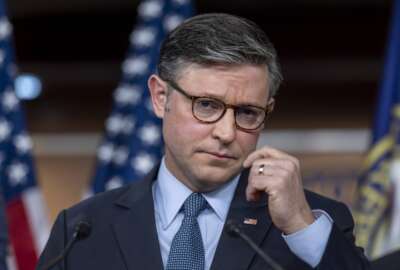Defense authorization bill leaves out reforms to federal IT acquisition
The annual policy legislation also doesn't merge the DoD CIO and deputy chief management officer.
Major reforms to federal IT acquisition processes will have to wait another year, at least where Congress is concerned.
The agreement by the House and Senate Armed Services committees on the Defense Authorization bill earlier this week doesn’t include the Federal IT Acquisition Reform Act (FITARA).
“We note that the acquisition of information technology is a challenge across the federal government and that reform of the information technology acquisition process remains a priority in the defense committees and the Congress,” the committees’ joint explanatory statement said. “We expect to continue working on improvements in this area and hope to bring a set of comprehensive reforms forward in the next fiscal year.”
The House bill included the provision that spelled out FITARA, but the Senate bill did not.
Sen. Jeanne Shaheen (D-N.H.) planned to introduce an amendment to include FITARA in the authorization bill, but never got a chance to do so on the floor.
She still has a FITARA bill before Congress, but the chances of it passing as stand-alone legislation is unlikely.
“Sen. Shaheen is going to continue to work to find a pathway for the bipartisan FITARA bill,” a Shaheen spokeswoman said by email.
There seemed to be momentum building to pass what would’ve been the first major change to IT acquisition law in a decade with the HealthCare.gov debacle.
But in the end, the final agreement didn’t include FITARA.
“While the FITARA amendment not being included in NDAA is a disappointment, the Oversight [and Government Reform] Committee approved H.R. 1232 on a unanimous bipartisan vote,” said a committee spokesman by email. “Chairman [Darrell] Issa (R-Calif.) is optimistic a standalone bill addressing critical IT procurement reforms will move forward in both houses next year.”
Issa and Rep. Gerry Connolly (D-Va.) were FITARA’s main authors.
No merger planned
The Defense committees also didn’t agree to merge the Defense Department’s chief information officer and the deputy chief management officer (DCMO).
This provision followed a similar fate as FITARA. In this case, the Senate bill included the provision, but not the House version.
“We note that the department has recently made the congressional Defense committees aware of a proposal that addresses the concerns raised by the Senate committee-reported bill. We will evaluate this proposal before making a decision on elevating the DCMO and designating that new position as responsible for the CIO roles,” the report stated.
Defense Secretary Chuck Hagel last week announced major changes to the structure of the Office of Secretary of Defense, which included the idea of the CIO taking over the business systems oversight from the DCMO.
This change received strong support from former DoD CIOs and senior executives. In a letter to House and Senate Armed Services committee members from July, five former DoD senior officials advocated for the merger, saying the CIO’s position needs to be strengthened given today’s complex IT and management environment.
Cloud, cyber provisions
The DoD authorization bill agreement contains several other interesting provisions, including the decision by lawmakers not to support the House’s language limiting funding the integrated health records system.
The joint statement said the Senate bill didn’t contain such a provision to limit the amount DoD and the Veterans Affairs could spend on the joint interoperable system to 25 percent of the $344 million requested until the Defense Secretary submits a report to Congress detailing an analysis of alternatives.
Another interesting provision in the bill focuses on cloud computing.
Lawmakers want DoD’s CIO and undersecretary for Acquisition, Technology and Logistics to supervise the development and implement plans for the acquisition of cloud computing capabilities worth more than $1 million for intelligence, surveillance and reconnaissance data analysis in the military services and Defense agencies
Lawmakers also focused on several cybersecurity issues.
Two of the more interesting provisions would require the President to establish an interagency process to develop an integrated policy to deter adversaries in cyberspace. The provision would require the President to provide a report to the congressional defense committees on this policy within 270 days after the enactment of this Act.
Additionally, the bill included language to require the President to establish an interagency process with input from industry to develop policy to control the proliferation of cyber weapons through unilateral and cooperative export controls, law enforcement activities, financial means, diplomatic engagement and other means that the President considers appropriate. The provision would also require the President to develop a statement of principles regarding U.S. positions on controlling the proliferation of cyber weapons to create new opportunities for bilateral and multilateral cooperation to address this shared threat. The provision would require the interagency process to produce recommendations within 270 days of the enactment of this Act.
RELATED STORIES:
Hagel shakes up Pentagons organizational chart, hopes for $1B in savings
House approves IT reform amendment to Defense bill
Rep. Connolly says momentum is building for IT procurement reforms
Inside the Reporter’s Notebook: HUD buying into shared services, renewed push to merge DoD’s CIO
Copyright © 2025 Federal News Network. All rights reserved. This website is not intended for users located within the European Economic Area.





